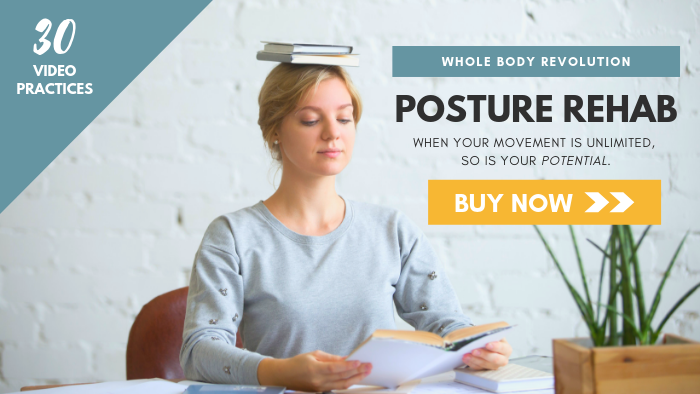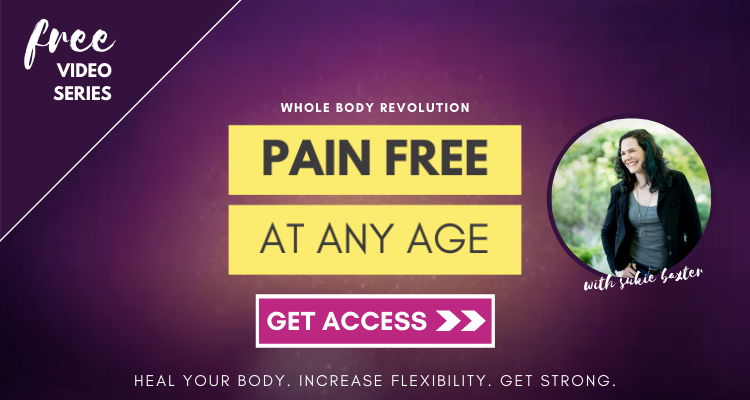Listen, anxiety is real. I know it’s one of those hoo-haw reasons people use to justify their weed habit, but like wind, anxiety is something you can’t see that does a ton of real, tangible damage.
And most of us are living at least a little bit of it.
Years ago, I wandered into a yoga for anxiety workshop out of curiosity. I’m a bodyworker, so I’m always looking for ways to help people through work with the physical body.
I couldn’t believe how full the class was. It was so packed, in fact, that they had to turn people away. “Look around you,” the instructor told us. “Look at all the people who are living this secret life.”
Anxiety Is A Secret Identity
Chronic, low-grade anxiety does give you a sort of secret identity, but not in a superhero X-Men sort of way. Instead of having amazing powers, you’re crippled by thoughts about catastrophes that just **might** happen.
One minute, you’re super happy, humming zip-a-dee-doo-dah and waving breezily at your neighbor. The next, gremlins infiltrate your brain with insidious little thoughts about things you might have left undone, situations that could go wrong, disasters that have a 0.0003254% chance of occurring.
What if I left the stove on…
What if the door is unlocked…
What if the client cancels…
What if I get a negative review at work…
What if I my kid doesn’t pass second grade…
What if my spouse doesn’t love me anymore…
What if I’m not good enough…
What if my body is ugly and gross…
What if I lose my job…
What if I can’t do it?
Everyone has these fears to some extent. Life is fraught with uncertainty and we all suffer at least some level of imposter syndrome — feeling like you’re not really qualified to do whatever you’re doing (everything from writing a book to parenting to simply having an opinion).
But left unattended, these what if thoughts can start to take over your life.
My Anxiety Story
Nearly twenty years ago, I had a lot of problems. They weren’t “on paper” problems like a drug habit, alcohol addiction, panic attacks, failing out of school or other “diagnosable” issues. In fact, on paper, I was doing great.
I was a gold medal competitive college athlete, a dean’s list student and I’d just returned from my second study abroad making me now fluent in two foreign languages. Everything looked…fine.
But it wasn’t.
Inside, I was a giant quivering mess. And all that internal gnawing showed up in…well, external gnawing. To calm my nerves, I ate.
And then I punished myself for eating with diets and exercise. A lot of it. Only, no matter how much I tried to work out and eat the “right” foods, nothing really ever stuck. Why? Because food wasn’t the problem — anxiety was.
Being vs. Doing
Science has made our culture very doing focused. I’m not knocking science, of course. In fact, I’m a data junkie. But sometimes in the process of scrutinizing the microscopic picture, we look only at the toppings and not at the whole pizza.
And then we wind up treating symptoms instead of root causes. For me, overeating was a symptom of a deeply held underlying anxiety. No matter how much I tried to control the “doing” aspects of my life, i.e. the calories I was eating and burning, nothing stuck because my anxiety was the driver for my appetite.
How I was “being” on a day to day basis drove everything that I did. So trying to change my habits without changing my underlying state was kind of like trying to put a roof on a house with no walls and no foundation.
The Anxiety Switch
I was just a kid in college, but I knew something wasn’t right. After talking to counselors and therapists with little success, I tried reading body positive books. These gave me momentary blips of happiness before I devolved into anxiety again. We already know that diets and exercise weren’t it.
And then something unexpected happened. As a college athlete and former equestrian, I had a lot of tight muscles and pain. As luck would have it, someone practicing a strange sounding form of holistic postural therapy called “Rolfing” came to the barn where we kept our horses.
My mom started treatment first to address a spinal injury she’d suffered that caused her some back problems. It truly helped her, so I gave it a try as well. In seeking therapy for my broken body, I discovered an unexpected benefit.
My muscles and joints ceased hurting, my flexibility increased, but my mood was also affected. I found myself to be much more calm and centered. My creativity blossomed. I started drawing and was even asked to facilitate an arts program at the tech company where I worked.
I felt happier and more comfortable in my own skin than I ever had before. And my eating stabilized.
Now, I’m not saying it cured all my food issues. Disordered eating is complex. But changing my body made inroads where nothing else had even dented the surface.
The Physiology of Anxiety
When people ask me how I got into the work that I do, typically I just tell them that I had it done and found it very helpful. I don’t go into all the details.
But the truth is that while, yes, it changed my body, what hooked me and got me to pursue bodywork as a career is the impact it had on my brain. I had never felt so…me.
But I had no idea why it had this impact. It seemed like crazy magic, and I had to learn how to wield it. For a long time even after I completed the training and was actively practicing with clients, I had no idea why postural realignment impacted people’s lives so profoundly.
Many clients have made drastic life changes after getting treatments, everything from leaving abusive relationships to switching careers, losing huge amounts of weight or even just saying that, like me, they felt that stress and trauma had loosened their grip on their emotions.
I never gave up looking for the mechanism behind the magic. I had an inkling that the nervous system was involved. And a couple of years ago when a particular training coincided with some personal life events, it finally clicked.
Tension — tightness in your muscles — is a physical indicator of activation in the sympathetic branch of your nervous system.
Say what?
Let me put that in plain English: muscle tension means you are, on some level, living in a chronic state of fight or flight.
The Body Tells the Brain What to Think
When your body is tense all over, your brain believes that there’s something to be worried about. In short, it thinks a sabertooth tiger is lurking in the bushes, waiting to pounce.
While your brain can control your body — mind over matter, and all of that — your body also talks to your brain. The mind-body connection is a two-way street.
No wonder I was anxious all the time — and so many other people are, too. With the increase in sedentary jobs, the prevalence of technology in our everyday lives, long commutes, and a cultural addiction to sitting, the health of our bodies has suffered — namely our posture.
Suboptimal posture (read: bad) puts extra strain on your body. It makes your muscles work harder to hold you up. Executing the same repetitive fine motor skills (typing, mousing, texting) over and over for hours at a stretch day after day tightens our arm, shoulder and neck muscles.
Our bodies are tight. And so our brains believe we’re in danger. They go crazy looking for the threat.
Is it the stove that you may have left on? Did you remember to lock the door?
Every quirk of an eyebrow, every snide comment, every awkward interaction is an opportunity for worry and fear.
But there is a fix.
How Better Posture Can Change Your Life
Here’s the good news: you don’t need years of therapy to calm your anxious body. While therapy is highly beneficial (and recommended) just treating the thoughts in your head doesn’t address the physical aspects of anxiety.
I have had clients come to me to work on their bodies after twenty years of therapy because they’d hit a wall that they just couldn’t break through. Working with the body can make inroads in regions of your brain unaffected by rational thought.
Realigning your posture alleviates muscle tension. Truly good posture is easy to maintain and allows your body to stay upright with the least amount of effort.
Good alignment means less physical tension. And carrying less tension causes your brain to relax.
Your nervous system has two modes: fight or flight and rest or relax.
You can’t be in both at once. Changing your posture shifts your body from fight or flight into the nice, calm, happy rest and relax response. It’s in this state that we connect to others and get creative.
You can’t fully function if you’re always in fight or flight. Some part of you is always looking for the tiger in the bushes. You’re in survival mode, focused on dispatching threats and not on connecting to others, creating, or building a successful future.
The only thing you want in that moment is to get away from the danger. To survive.
But a life lived in rest and relax is much different. When you’re in your calm state, you have space to connect, to be present to your partner and children, to build and create, to dream.
This is what Posture Rehab is all about.
The effects of better posture are like meditation for your body. When I created Posture Rehab, I wanted more for my clients than just better alignment.
Don’t get me wrong. Alignment can be a miracle for alleviating pain and body issues. Posture Rehab definitely does that…but it also works to calm your nervous system down.
The function is two-fold. First, it decreases muscle tension, which allows you to stand taller and move more freely with less effort. This takes care of making your body feel ten years younger and giving you the energy of a pageant kid on pixie sticks.
Second, it makes you happy. Better posture has been proven to boost mood, improve positive thoughts and even augment problem solving skills.
Healthy. Happy. Productive. What more could you ask?
The Posture Rehab system is a video course designed to teach you the tools of better posture so you can create these kinds of results for yourself.

